Live Arts Fest Honors Dance Legacies and Makes Critic Sweat
When we had to do a movement phrase crossing the floor, I started to think that being onstage was a very bad idea. But last Thursday’s event at the Live Arts Fest—”Horton Technique, Legacy, and Beyond”—was billed as a master class in the styles of two legends, Lester Horton and Bella Lewitzky. I wanted the full experience, and I got it, in a sweaty, fun, challenging hour that started with a Horton warmup led by Khamla Somphanh, followed by further warmup and floor exercises led by Diana MacNeil, a longtime member of Lewitzky’s company.
I did retreat to the audience at the White Box Theater when Michael Mizerany, another Lewitzky veteran, ramped up the complexity and speed of the movement phrases. By then, I’d had a uniquely kinetic dance history lesson, embodying the rigorous linearity of Horton’s style (some of it like yoga poses) and the way Lewitzky softened those lines into curves, embracing space.
Horton and Lewitzky defined modern dance in Los Angeles. Horton formed his first company there in 1932, and Lewitzky became his lead dancer. She went on to create her own company in 1966, when she was 50, and it continued for 30 years.
The evening also included two videos of Lewitzky performing, in a rehearsal of Horton’s “Beloved” and with her students at the Idyllwild School of Music and the Arts—the school gave her work after she was blacklisted by the House Un-American Activities Committee in the 1950s.
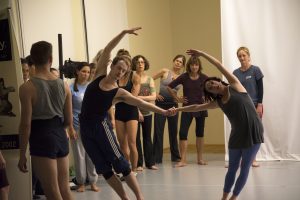
A guide to the perplexed: Matt Carney and Diana MacNeil demonstrate a Lewitzky floor exercise. Photo: Freja
The unusual performance format of a master class and juicy dance history lesson reflects the unusual—and terrific—focus of this year’s Live Arts Fest. Presenter San Diego Dance Theater titled the festival “Modern Masters and Movements,” and the 10 performances, from April 14 through May 2, cover a stunning range of dance legacies.
The lineup began last Tuesday with a performance by IsadoraNOW, founded by Elyssa Dru Rosenberg, an Isadora Duncan teacher and scholar. Next came “A Tribute to Jose Limon,” a dance-bio by Celeste Lanuza Dance Group.
I caught the Horton-Lewitzky evening last Thursday and Friday’s program of work by Robert Cohan, which included the treat of having Cohan and four dancers here from the UK.
Cohan provided both a connection to Martha Graham—he was a member of her company for 23 years—and to the lineage of modern dance in the UK. He became the founding artistic director of the London Contemporary Dance Theatre in 1967 and led the company for 20 years. The rich program offered both video and live performance, including a piece he created this year, at age 90.
Kate Harrison Brill, who danced with London Contemporary Dance Theatre in the 1970s and now lives in San Diego, arranged for Cohan’s visit. And she staged a duet from his 1977 work “Forest,” setting it on San Diego dancers Trystan Loucado and Stephanie Maiorano. Maiorano is a principal with San Diego Ballet, and Loucado has danced with Les Ballets Trockadero de Monte Carlo and multiple local companies. And they made a riveting pair, he long-limbed and powerful, she tiny and precise, both of them with delicate steps as if they had deer-hooves instead of feet. Adagio phrases, requiring such control that it felt tense to watch, gave way to speed and athletic lifts—he did a fast spin holding her in the splits—as the score (by Brian Hodgson) suggested a violent storm.
In recent years, Cohan has worked with Yorke Dance Project, and four members of the company came with him to San Diego. A film clip showed him setting “Canciones del Alma,” a 1979 solo, on company director Yolande Yorke-Edgell. Yorke-Edgell then did a live performance of the work, created to Geoffrey Burgon’s musical setting of three poems by the 16th century mystic St. John of the Cross. A gorgeous, yearning piece, it features reaching arms, precise pressing hands, and leg sweeps that turned Yorke-Edgell’s flowing skirt into another element of the dance.
A BBC film of “Stabat Mater” (1975) was a particular treat for Brill’s impassioned yet restrained lead performance as the grieving Mary, whose friends try to comfort her. I’ve never noticed clavicles as much as I did in this choreography, in which a sink in Brill’s clavicle and sternum conveyed an immensity of sorrow.
The four Yorke Dance Project members did Cohan’s 2015 “Lingua Franca.” Searching for a common language, one or more dancers simply stood, observing, then picked up bits of one another’s movement vocabulary—and Cohan gave them delicious moves, clearly delineated and fresh: a jump with a midair twist of the hips; a bent-elbowed arm held overhead, hand at the heart; and, as they connected, a deep unison plié with torsos canted from side to side. While the entire cast (Yorke-Edgell, Jonathan Goddard, Ben Warbis, and Laurel Dalley Smith) was strong, my eyes kept being drawn to Smith, whose onstage presence crackled—her face alert, her being vividly alive.
A landmark event, the show drew an overflow crowd including many local dance makers and several veterans of London Contemporary Dance Theatre who’d come from around the U.S. [php snippet=1]
More Live Arts
The festival continued with work by two local masters, Jean Isaacs and Pat Sandback. Last night, a program directed by Jess Humphrey explored the question: “Should contact improvisation be performed?”
Still to come:
– Tonight’s performance investigates another movement practice—and connects with a vibrant part of San Diego dance history—as Jane Blount, a founder of the Lower Left Performance Collective, presents an evening of authentic movement.
– Tomorrow evening, we get the next generation, with work by Blythe Barton and Zaquia Mahler Salinas.
– On Saturday, May 2, Katie Duck and Yolande Snaith do a collaborative evening and a further European connection; Duck works in Amsterdam and Snaith, now a faculty member at UCSD, got her start in her native UK.
All performance are at 7:30 p.m. at the White Box Theater, Liberty Station.

Award-winning dance journalist Janice Steinberg has published more than 400 articles in the San Diego Union-Tribune, Dance Magazine, the Los Angeles Times, and elsewhere. She was a 2004 New York Times-National Endowment for the Arts fellow at the Institute for Dance Criticism and has taught dance criticism at San Diego State University. She is also a novelist, author of The Tin Horse (Random House, 2013). For why she’s passionate about dance, see this article on her web site, The Tin Horse

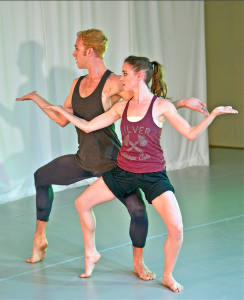
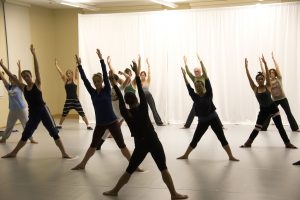
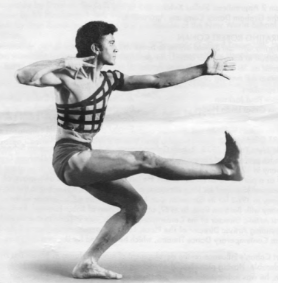
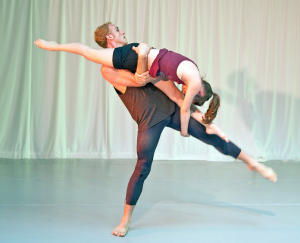
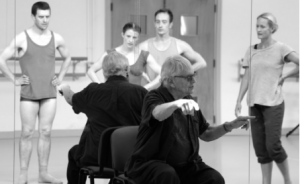


Thank you for this review, Janice. This year’s Live Arts Fest is truly a living history of Modern Dance in San Diego, America, and the World!